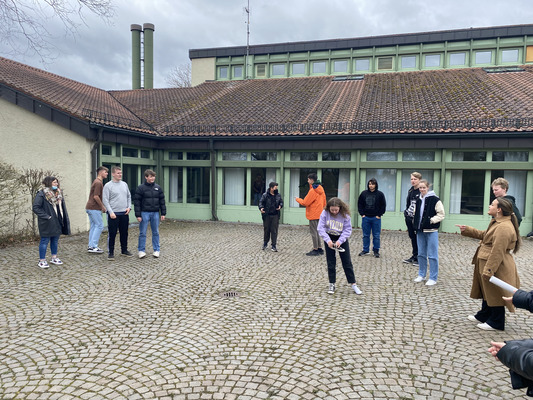Thursday 7th April
The Spanish afternooon consisted of three different workshops led by the Spanish students.
- A virtual tourist guide of the town of Fraga in the form of a Treasure Hunt
- A cooking workshop based on traditional culinary specialities from Fraga
- Traditional games which use recycled items
The guest students (Danish, Greek and German) worked in turns in international mixed teams through all three workshops.

Fraga Treasure Hunt
Students go to a webpage specially created for the occasion. They must read carefully and find some clues. Using Google Maps, they must find the most iconic landmarks in town. Once they find them, students must "take pictures" by copying the URL on Google Maps and pasting it onto a Google Forms.
Click on the image to access the webpage

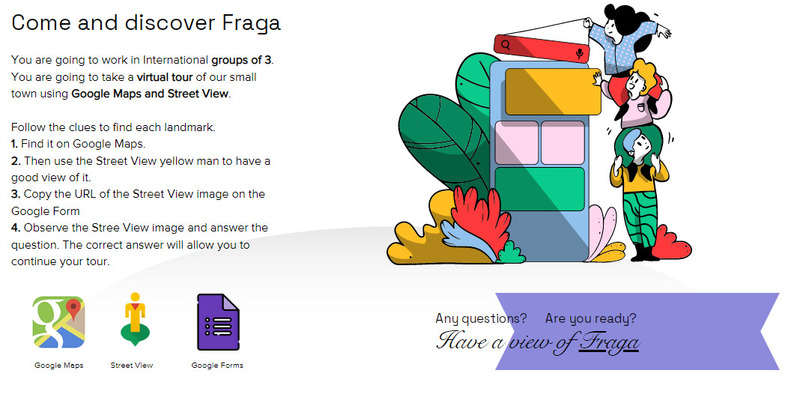
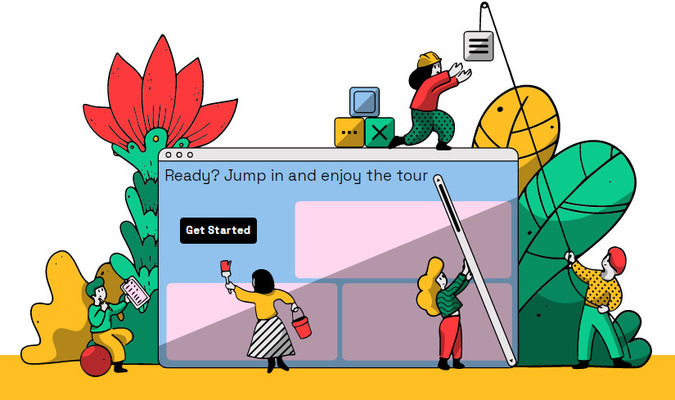
Google Form to collect the answers: Click on the image to access the form
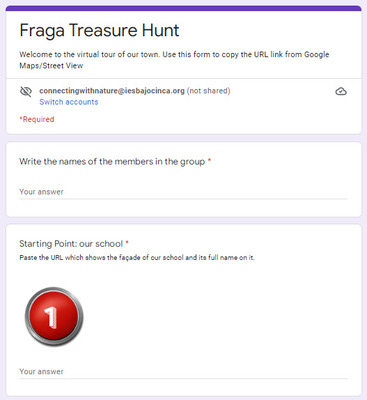
Cheat sheet containing all the passwords to move forward in the Treasure Hunt.
Photo Gallery of the Workshop
After finishing The treasure Hunt all students were given a bag and a map of Fraga.
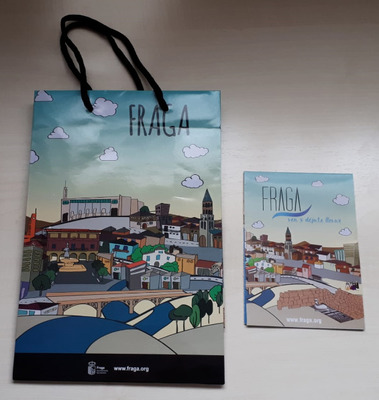
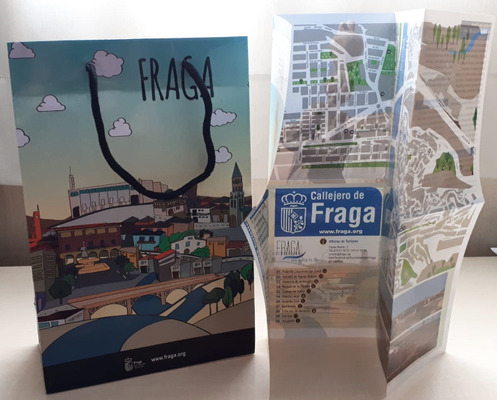
When students reach the end of the Treasure Hunt, they get the beautiful landscape of the orchards in bloom that surround Fraga as well as the panoramic views of the town.

Cooking Workshop: "Mostaxons" and "pa en tomate"
These two recipes are done using basic ingredients that are always present in each home.
"Pa en tomate" used bread which may have been left hard. By soaking it with the tomato juice, the bread became soft again. It is a typical recipe for a Sunday informal supper when people do not feel like cooking. It is also a social dish which allows people to gather around a table and talk while eating it with ham or any other cold meat.
These are the recipes:
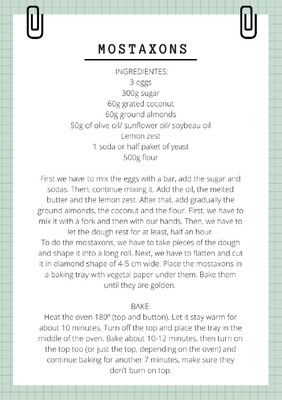
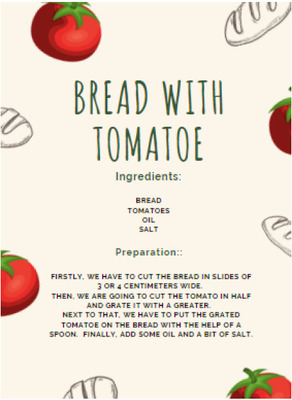
Spanish students taught how to mix and blend all the ingredients to make the dough for the "mostaxons". They also taught the German students how to cut them in the typical romboid shape that these buscuits have. The dough was taken home and German students baked them. They were brought back to school the last day for the farewell party.
Later they prepared "pa en tomate" and they could eat it as a snack!
Photo Gallery of the Workshop
Students eating the mostaxons at the farewell party after German students had baked them at home.
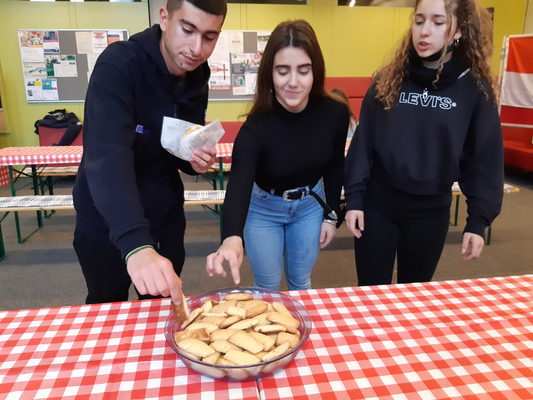

Traditional Outdoor Games
In the old times, when money was scarce for toys, children used what they had at home to play and have a great time. We chose three/four games that use recicled items as its equipment: a handkerchief, some bottle caps and an old type of shoe.
These are the explanations and instructions of the games. However, the videos will provide the reader with a better understanding of how to play the games and how much fun they can be.
The handkerchief game
The handkerchief is a traditional and popular game known and practiced all over Spain not only on the occasion of parties but also in situations such as playing in the street or in schools.
Since the dynamics of the game is very simple, it fosters different generations to play together. For this reason we encourage you to invent variations such as playing it with roller skates - is great fun - or going on horseback or playing drive trolley in pairs. It is especially great fun when playing with blind-folded eyes.
We make two teams of equal number of players and each one is assigned a number. These teams are placed at one end of the delimited field (about 20 metres) and the person who monitors the game is placed in the middle of the field and will be calling numbers at random. Then from each team the kid who has that assigned number will leave and will have to take the handkerchief before the opponent and bring it to his/her own field.
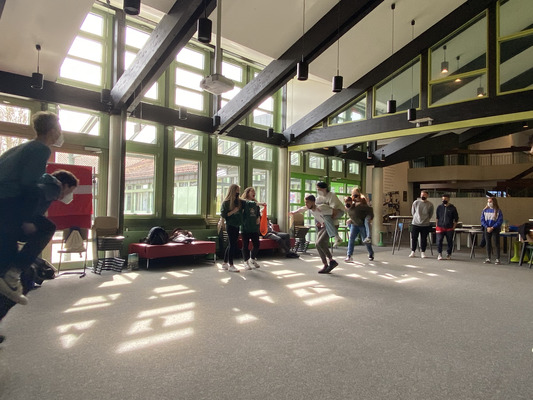
Football Cap game
The game became popular after the second half of the twentieth century when refreshing beverages began to appear with metal bottle caps. At that time children imitated soccer matches using these metal bottle caps. Sometimes they would even use old buttons.
We look for a place where the ground is smooth and we draw a football field there. Each player will have four or five bottle caps which will be distributed on the field. A different colour bottle cap will work as a ball. Each player will alternatively be moving one of his team bottle caps trying to move the ball. If instead of touching the ball it touches an opponent this player has the right to shoot twice. This also happens when the ball cap is sent out. The winner is the one who can score more goals in a certain time or the one who can reach a specific score.
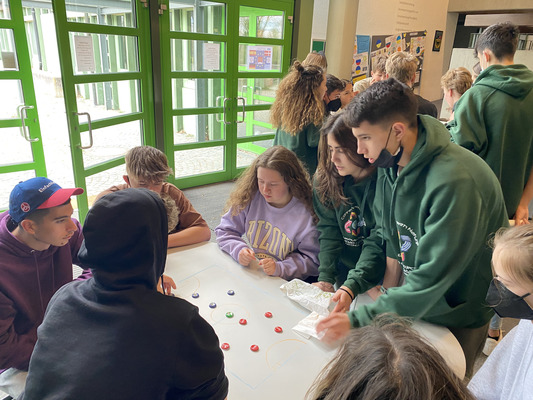
The Espadrille Game
It is a game of ability and agility rather than strength and it has its origin in shepherds´ games. The game can be played using other objects apart from an espadrille. The game is found all over Europe. It was also written in the games list by Pieter Bruegel (1560) appearing on that occasion the group of children throwing their hats under their legs.
The game is very simple. You draw a line from which each player will alternatively throw an espadrille under his/her legs. The difficulty lies in the fact that while doing it, the person must be with the feet fixed on the ground on the front and that they must pass their hand under their legs and throw the shoe behind their back forwards. The person who wins is the one who makes the shoe go further. Everyone has three attempts.
